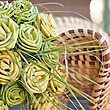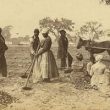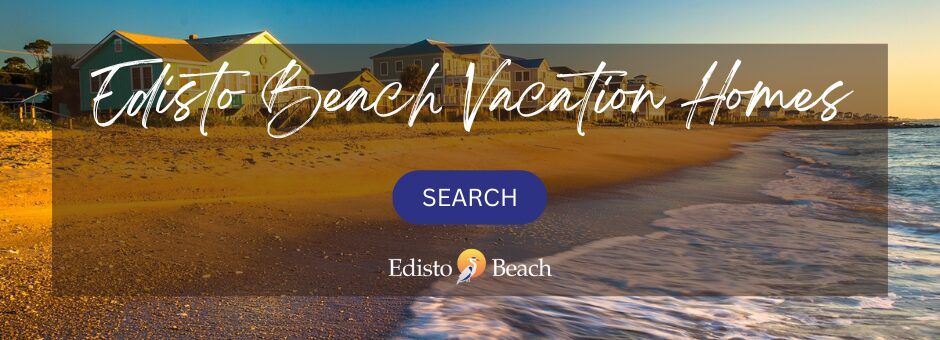Driving or walking through a tunnel of trees immediately relieves stress and helps you relax. This magical experience is easy to find when you visit Edisto Island. While there are tunnels of trees throughout South Carolina, the tunnel at Botany Bay in Edisto will take your breath away!
This must-see tunnel of trees begins when you make a left onto Botany Bay Road and drive forward until you see the Allen AME Church that dates back to 1876. Your adventure awaits just beyond the church, where you will slowly drive or walk down the wide dirt road covered with trees.
The canopy of trees makes you feel calm and protected while at the same time curious about the surroundings. The oak trees are grand and dripping with Spanish moss throughout the path, and lush greenery creates a wonderland of peaceful scenery.
Make sure you drive slowly to soak in all the area has to offer. If you are visiting Edisto for the first time, this tunnel of trees is an experience you can’t miss because there’s a big surprise at the end of the pathway!
Before we get to the surprise, make sure you catch the sight of the old oak tree standing alone that has lots of long branches, some that have grown just inches above the ground.
As you reach the end of the path, you will need to take a right turn to find the parking lot. You decide to stop and park, but we highly recommend it because this is where you will find a surprise!
There’s a footpath that is about four-tenths of a mile and leads towards the ocean. The path has lush trees, palm trees, and as your reach the end, it has a beautiful view of the bluest ocean you will ever see!
Botany Bay has two miles of beachfront property lined with stranded trees and a unique and natural “boneyard” of old driftwood that has been bleached white by the sun. The unique tree shapes make great and memorable backgrounds for family photos.
Enjoy walking along the beachfront and looking out into the ocean as the sun shines down on you to soak up any stress you might have left. While you are there, you can take pictures of the unique seashells you find along the way but make sure you don’t remove them from the beach or take any souvenirs. Park rules prohibit anyone from removing any natural elements such as seashells, tree branches, and plants from the protected area.
As you look around the grounds, you will notice that the path has led you to the Botany Bay Plantation, which includes 4,600 acres of freshwater ponds, maritime forest, beachfront views, and historical buildings standing in the distance.
The historical monuments are part of the surprise that this amazing land holds and what makes it a favorite spot for tourists, visitors, and locals. Back in the day, Botany Bay Plantation was two working plantations that went by the names Sea Could and Bleak Hall.
The plantations were hundreds of acres that grew unique cotton called Sea Island cotton, which was some of the finest in the entire world. This unique cotton was so exquisite that dressmakers in Europe used it to create their most elegant and beautiful designs.
These plantations were also home to the Gullah people, who were West Africans brought to the plantation owners and enslaved to work the grounds. The Gullah people were specifically chosen due to their superior skills in growing rice.
While Botany Bay is now best known for the exquisite cotton, the Gullah people who worked it are part of local and national history. When you visit Botany Bay, you are walking on the historical land of the people that have become the foundation of Southern cooking, national music, and much more.
Let’s learn a bit more about the Gullah people and their historical place in the country. The Gullah people were enslaved to work both the plantations, cotton, rice, and indigo plants. Their expertise in working the land made the plantation incredibly successful and one of the biggest manufacturers in the country at the time.
The Gullah people worked hard in the fields and would sing to make time go faster. The rhythmic singing encouraged everyone to keep going and was the birth of spiritual music and many other genres known today.
In addition, the Gullah used ingredients from their environment to create well-known southern dishes found in restaurants throughout Edisto Island and on the tables of many Southern homes to this day.
Popular Gullah dishes include shrimp and grits, sautéed shrimp and okra, fried corn cakes, Low Country peaches, cream pie, Gullah red rice, Frogmore stew, and plenty of seafood dishes. Another part of the surprise is that you can cook these recipes at home and find them on the menu throughout Edisto and most South.
If you love history, you will be happy to learn both plantations were able to survive the Civil War, and one of the houses at the Bleak Hall plantation was occupied by forces and used as a lookout during the war. Unfortunately, the house caught fire soon afterward, but it was rebuilt and is the structure you see still standing today.
In the 1930s, the plantations were purchased by Dr. James Greenway and combined to form what you see as Botany Bay today. In the 1960s, it was bought by an avid outdoorsman, John Meyer, and bequeathed to South Carolina in 2007 after Meyer’s wife passed away.
Today, Botany Bay is a hidden gem that tourists and locals are welcome to visit. The Botany Bay Plantation Heritage Preserve/Wildlife Management Area is currently managed by the South Carolina Department of Natural Resources.
Visit Edisto Island and the tunnel of trees and Botany Bay today!
Hours of Operation
You can visit Botany Bay from sunrise to sunset every day of the week except for Tuesdays when it’s closed for scheduled hunts.
Address
Botany Bay Road
Edisto Island,
South Carolina 29438






